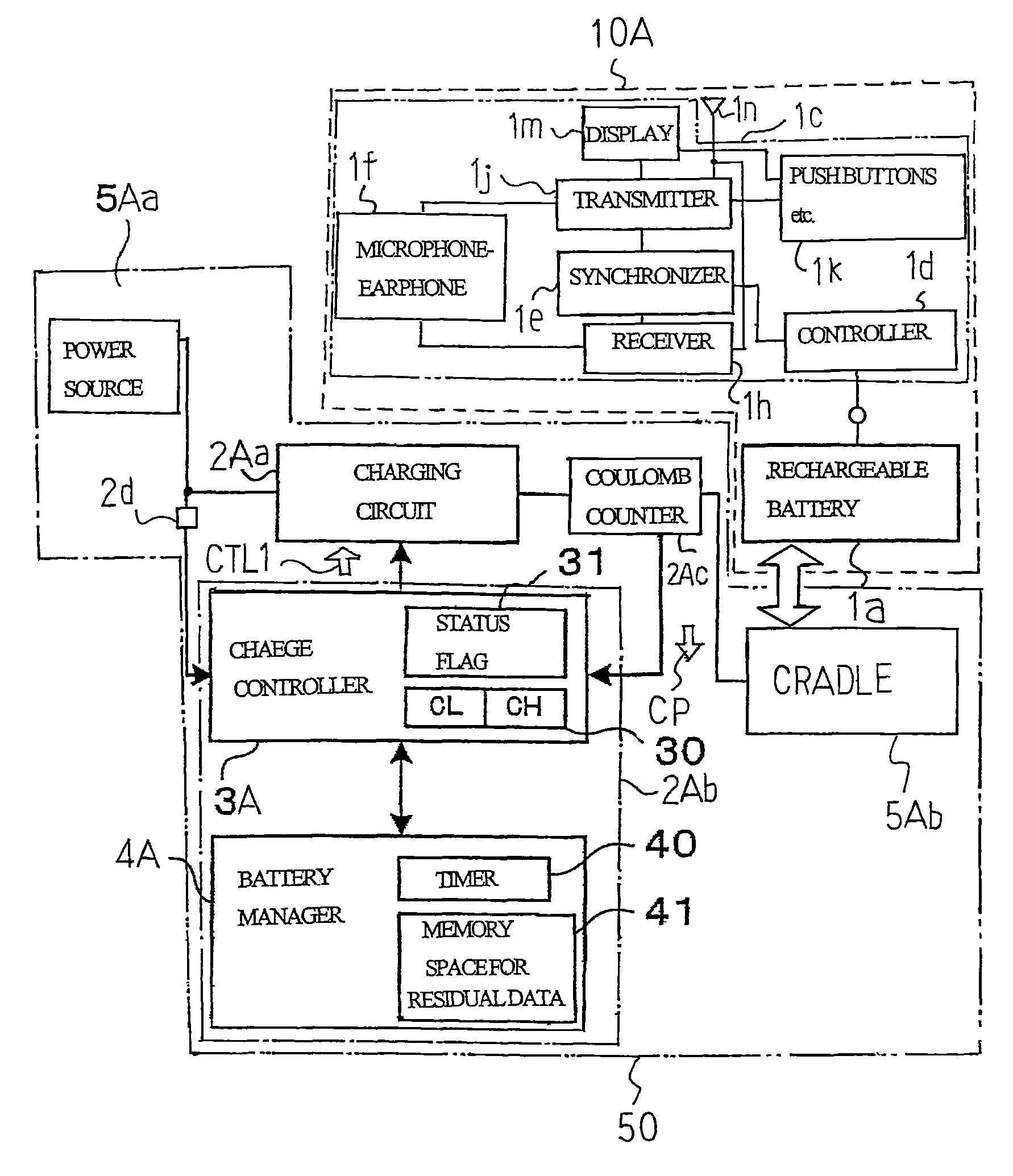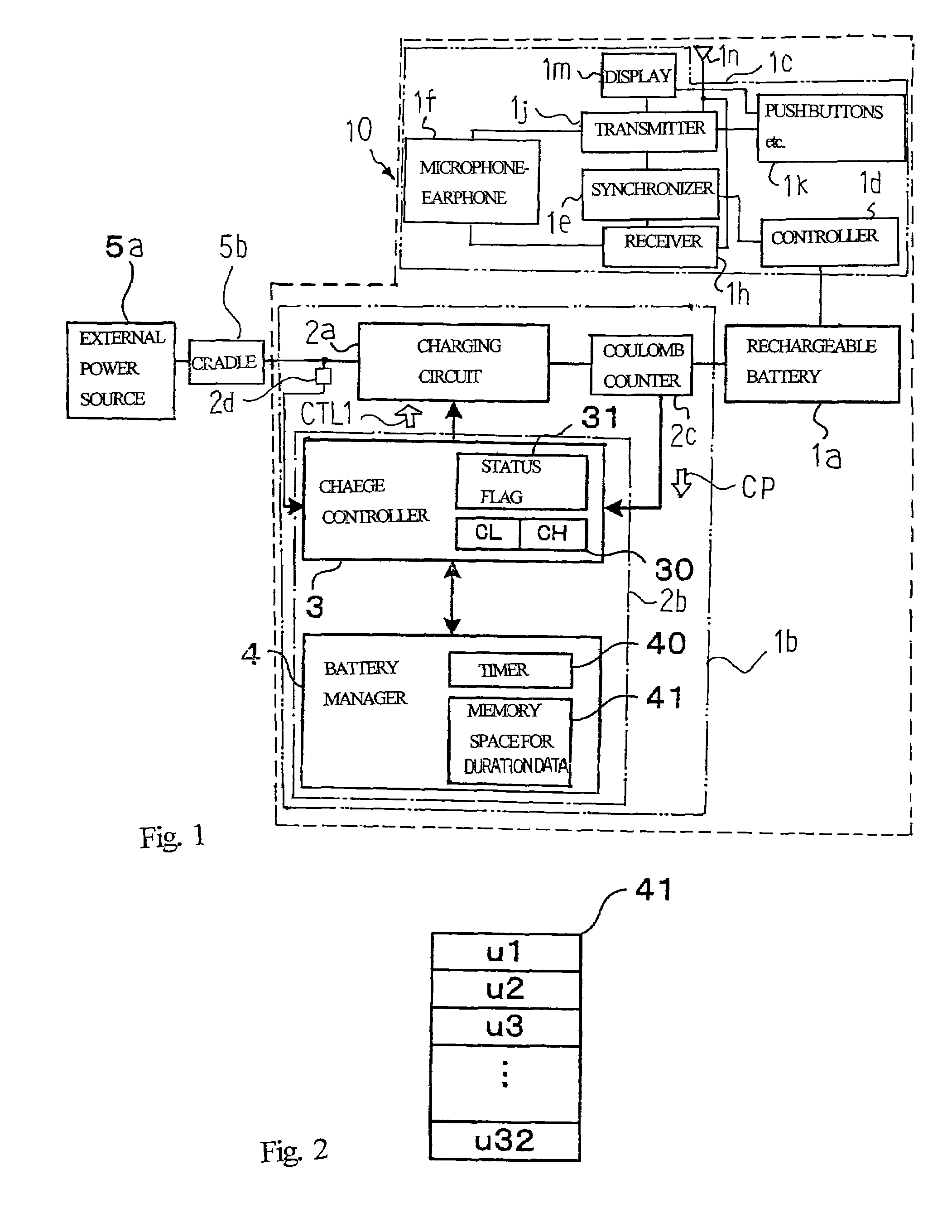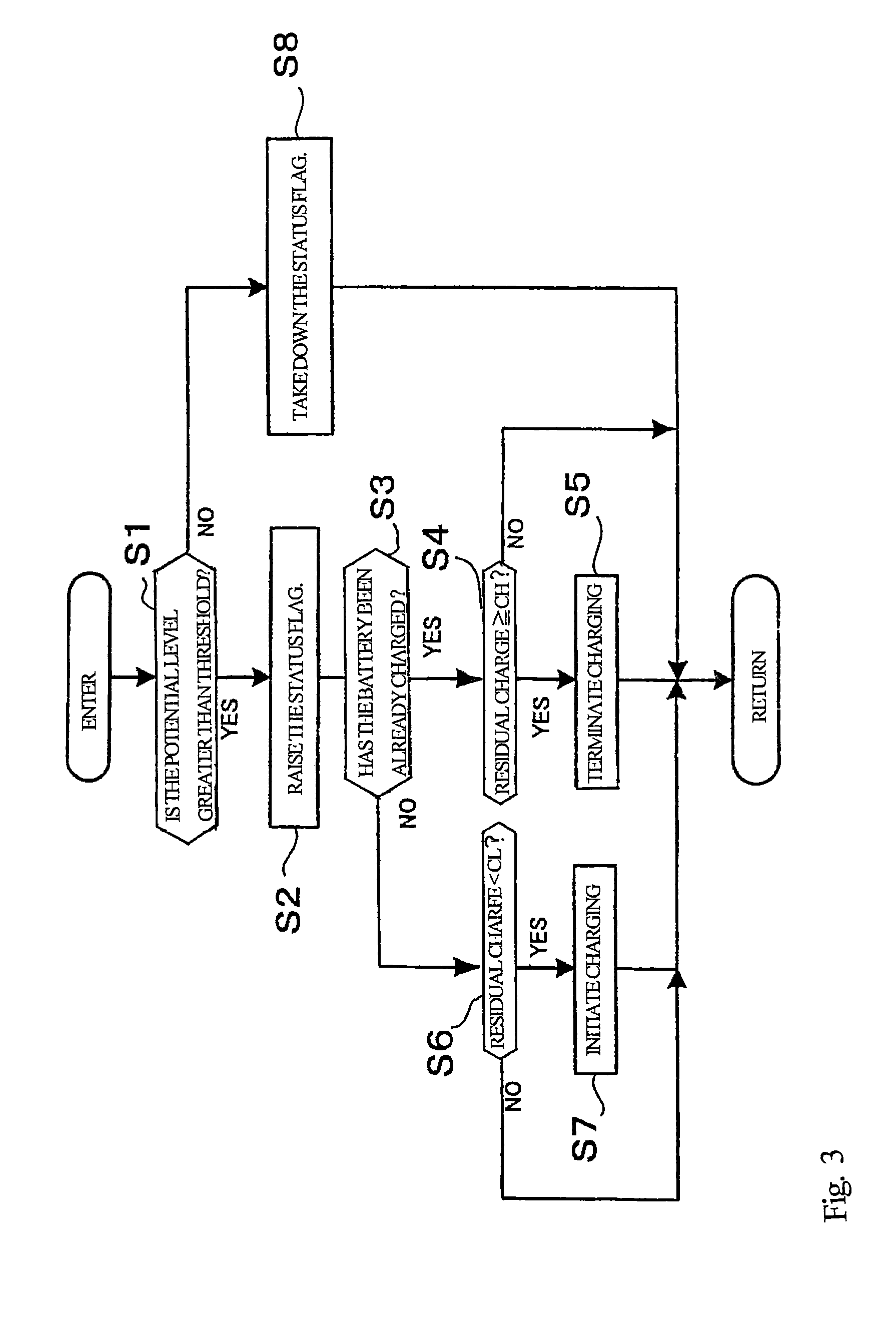Battery charger, secondary battery unit and electric apparatus equipped therewith
a secondary battery and battery charger technology, applied in the field of battery chargers, can solve the problems of shortening the duration time, reducing and deteriorating serious secondary cells, so as to reduce the number of charging operations and prolong the service li
- Summary
- Abstract
- Description
- Claims
- Application Information
AI Technical Summary
Benefits of technology
Problems solved by technology
Method used
Image
Examples
first embodiment
System Configuration of Electronic Appliance
[0032]Referring first to FIG. 1 of the drawings, a mobile telephone 10 embodying the present invention largely comprises a rechargeable battery 1a, a battery charger 1b and a radio communication system 1c. The battery charger 1b is connected to the rechargeable battery 1a for charging the rechargeable battery 1a, and the rechargeable battery 1a is connected to the radio communication system 1c so as to supply electric power to the radio communication system 1c. The battery charger 1b is connectable with an external power source 5a such as, for example, an ac-to-dc converter connected to a plug socket. A cradle 5b is provided between the external power source 5a and the battery charger 1b. While the mobile telephone 10 is standing idle, the mobile telephone 10 is put on the cradle 5b, and the electric power is relayed from the external power source 5a through the cradle 5b to the battery charger 1b. On the other hand, when a user picks up t...
second embodiment
[0089]Turning to FIG. 9 of the drawings, a battery charger 50 embodying the present invention is provided for an electronic appliance 10A. In this instance, the electronic appliance 10A is a mobile telephone. The mobile telephone 10A is similar in structure to the mobile telephone 10, and, for this reason, the system components of mobile telephone 10A are labeled with references designating corresponding system components of mobile telephone 10 without detailed description.
[0090]The battery charger 50 includes a charging circuit 2Aa, an information processing system 2Ab, a coulomb counter 2Ac, a power source 5Aa and a cradle 5Ab. The power source 5Aa contains an ac-to-dc converter, and the rechargeable battery 1a is put on the cradle 5Ab for charging. The charging circuit 2Aa, coulomb counter 2Ac and information processing system 2Ab are similar to the charging circuit 2a, coulomb counter 2c and information processing system 2b so that no further description is hereinafter incorpora...
third embodiment
[0093]Turning to FIG. 10 of the drawings, a secondary battery unit 60 embodying the present invention is connected to and disconnected from an electronic appliance 10B. Electric power is supplied from the secondary battery unit 60 to the electronic appliance 10B.
[0094]The secondary battery unit 60 includes a rechargeable battery 1Ba, a charging circuit 2Ba, an information processing system 2Bb, a coulomb counter 2Bc and a power source 5Ba. The power source 5Ba supplies dc current to the charging circuit 2Ba, and the rechargeable battery 1Ba, charging circuit 2Ba, information processing system 2Bb and coulomb counter 2Bc are similar to the rechargeable battery 1a, charging circuit 2a, information processing system 2b and coulomb counter 2c, and, for this reason, no further description is hereinafter incorporated for the sake of simplicity.
[0095]A computer program runs on the microprocessor of the information processing system 2Bb, and a charge controller 3B and a battery manager 4B a...
PUM
| Property | Measurement | Unit |
|---|---|---|
| time intervals | aaaaa | aaaaa |
| electric power | aaaaa | aaaaa |
| voltage | aaaaa | aaaaa |
Abstract
Description
Claims
Application Information
 Login to View More
Login to View More - R&D
- Intellectual Property
- Life Sciences
- Materials
- Tech Scout
- Unparalleled Data Quality
- Higher Quality Content
- 60% Fewer Hallucinations
Browse by: Latest US Patents, China's latest patents, Technical Efficacy Thesaurus, Application Domain, Technology Topic, Popular Technical Reports.
© 2025 PatSnap. All rights reserved.Legal|Privacy policy|Modern Slavery Act Transparency Statement|Sitemap|About US| Contact US: help@patsnap.com



